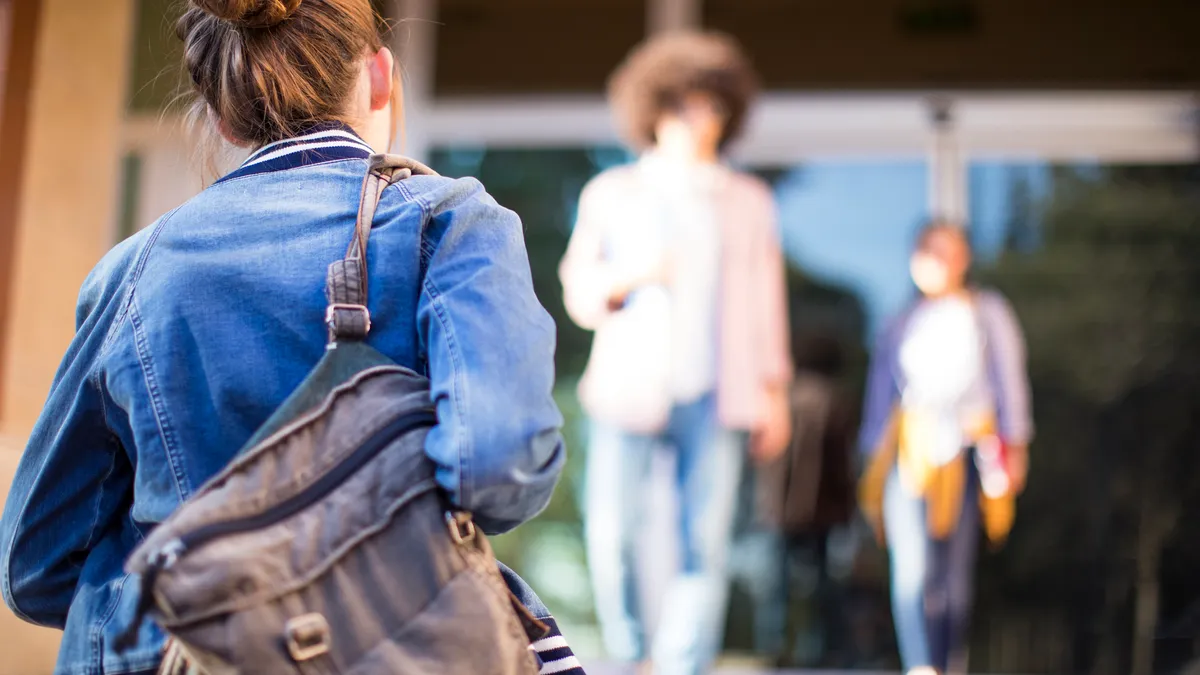Dive Brief:
- Amid legislative action, debate and media coverage around the way race is covered in classrooms, the journal Education Next prompted top academics and scholars to weigh in on what K-12 schools should be teaching about slavery and how well they are doing that.
- Diana Ramey Berry, the Oliver H. Radkey Regents Professor of History and chairperson of the History Department the University of Texas at Austin, suggests the history of slavery must be understood through "many degrees," writing "relying on the testimonies of the enslaved and the records of enslavers, we have an opportunity to learn about the degrees of slavery and freedom." Viewing slavery through multiple perspectives can allow for fuller context, but she also stresses the importance of debunking myths about slavery that have long been ingrained in history lessons.
- Allen C. Guelzo, director of the James Madison Program Initiative on Politics and Statesmanship and senior research scholar in the Council of the Humanities at Princeton University, said, “We ignore slavery, and its catalog of horrors, only when we are careless or deceitful.” Guelzo urges educators to put slavery into context, with the country being founded at a time when society was moving on from an idea of slavery as "being a normal or inevitable condition."
Dive Insight:
How topics like race, slavery and racism are addressed in schools is being debated at the highest levels of government. Earlier this summer, U.S. Secretary of Education Miguel Cardona deflected questions by Republican House Education and Labor Committee members about how the government influences civics curriculum regarding the history of racism. The committee members voiced concerns about the U.S. Department of Education referencing The 1619 Project in a rule for civics education grants, though Cardona said the government does not mandate curricula.
Regardless of politics, lessons on slavery can be traumatizing for some students. Experts, including some from the Southern Poverty Law Center’s Teaching Tolerance, say reenactments of slave trading in classrooms can be too realistic for some students. For example, a 5th grade teacher in New York drew criticism after having Black students roleplay as slaves who were auctioned off to their White peers.
Many experts have suggested more professional development around the topic is needed, with a focus on looking for additional materials and resources, such as original documents from that time, that can directly express the experiences of those who lived during slavery.
Textbook publishers have also had to revise materials in recent years over pushback for whitewashing American history. For example, McGraw-Hill in 2015 rewrote passages of a textbook that referred to slaves as “workers” and “immigrants” following complaints, with the publisher acknowledging the mistake and stating it would describe the African slave trade as forced migration and slave labor.
As historical evidence and understanding evolves, it is important for educators to stay updated on new revelations about past events, said Chara Bohan, a professor of education policy studies at Georgia State University, in a recent Q&A with GSU Research Magazine. Teachers also should be questioning their own assumptions about what they were taught when they were students, said Bohan.












